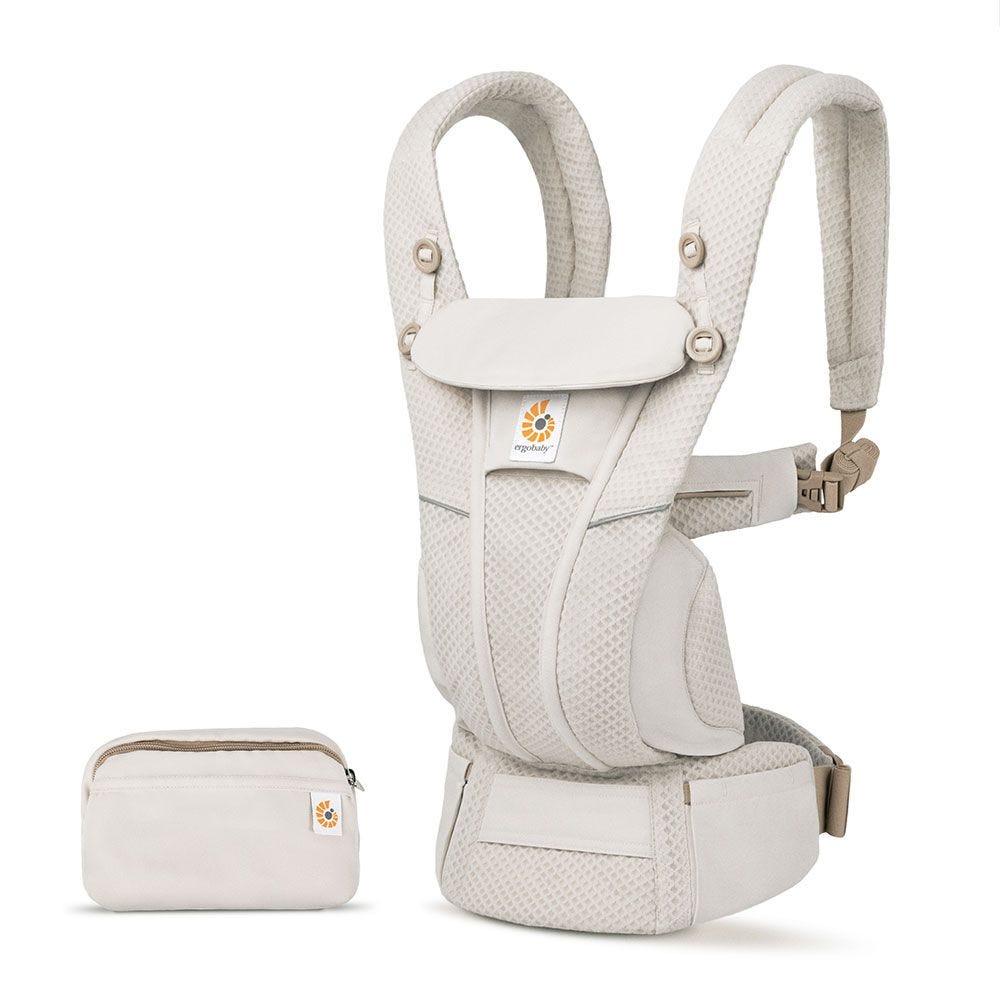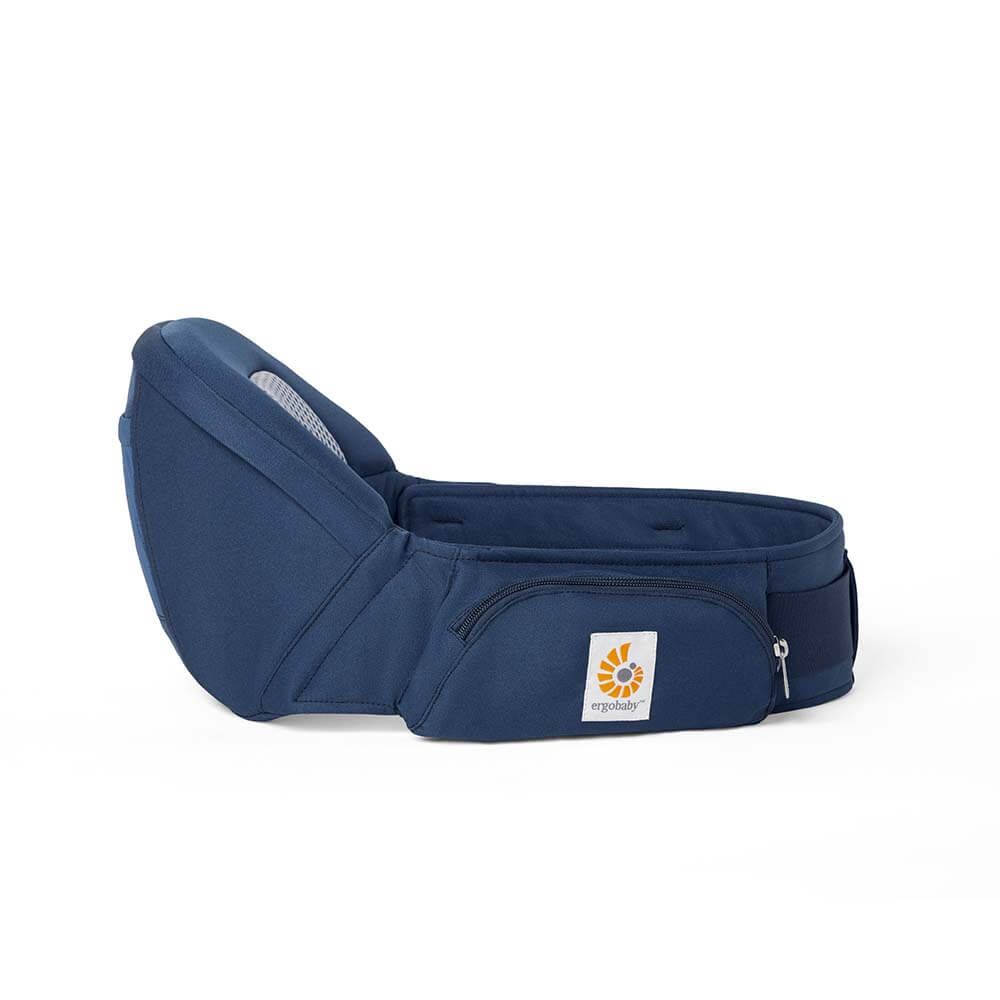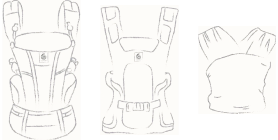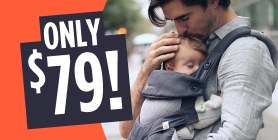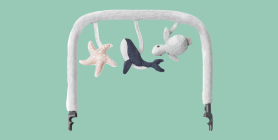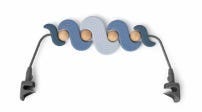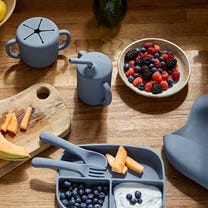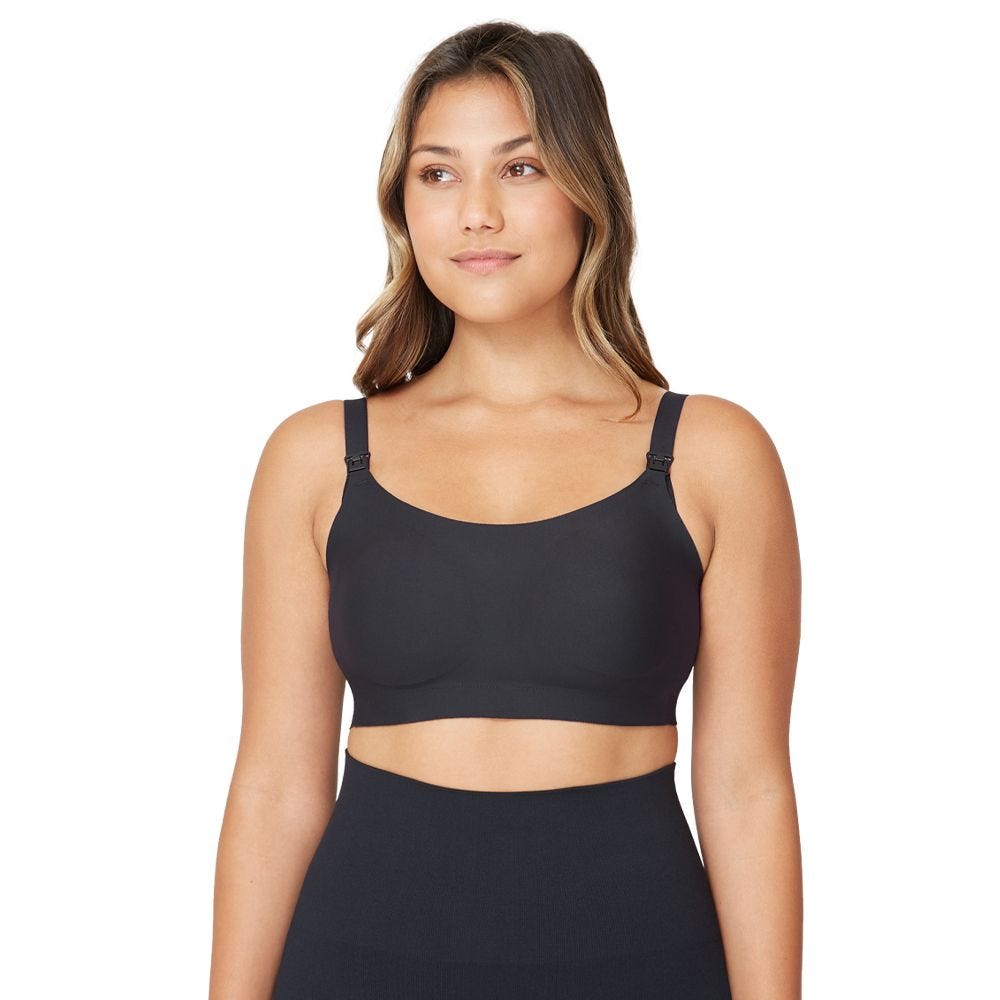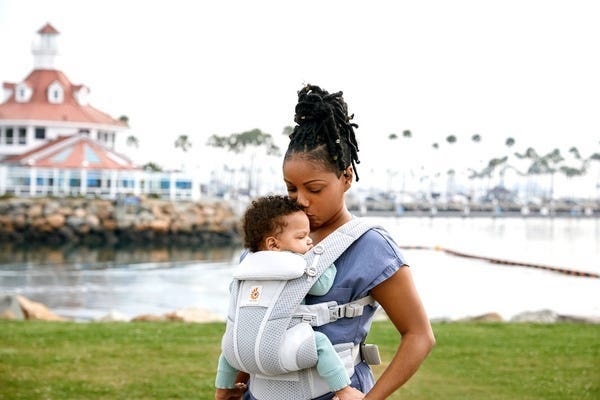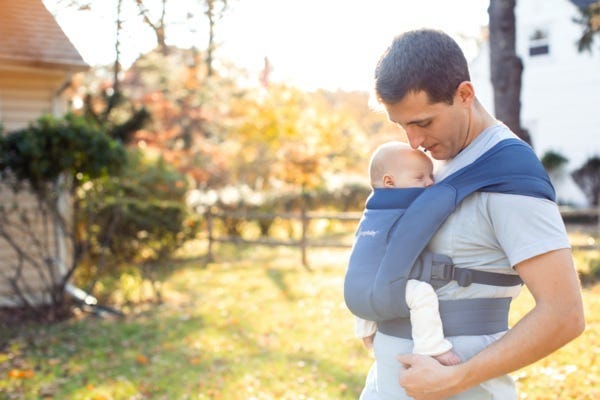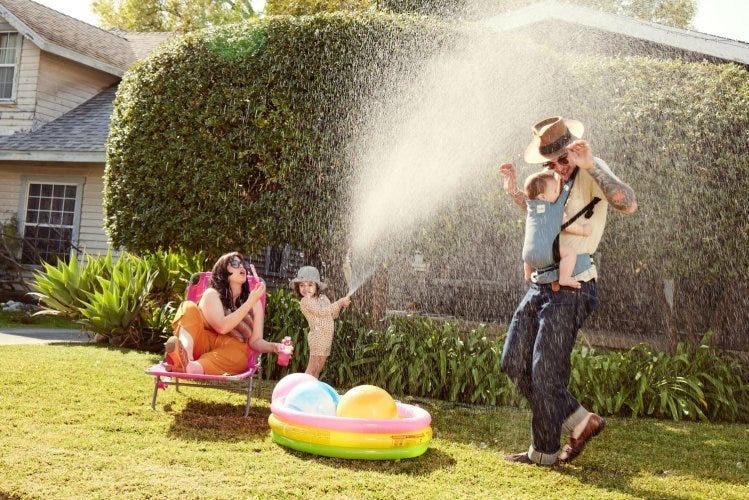One of the salient features of a well-designed baby carrier is that it keeps the carried baby in a correct ergonomic position. The obvious question which follows from such a statement is what constitutes a correct ergonomic carrying position for a newborn baby? A minimum requirement for an ergonomically correct position is that it should ideally promote a healthy development of the baby’s hips and spine. One of the conditions which pediatricians will normally investigate in a newborn child and in subsequent well-baby check-ups is that of developmental dysplasia of the hips (DDH). Hip Dysplasia definition and occurrence DDH is a disorder related to what is commonly known as the hip joint. The hip joint is where the head of the thigh bone (the femur) meets with the hip socket (the acetabulum). Hip dysplasia is diagnosed when there is either a complete or partial dislocation of the head of the thigh bone, so it no longer fits snugly and firmly into the hip socket; or instability, as when the head of the thigh bone comes in and out of the socket. Doctors tend to stress the term developmental dysplasia of the hip, as the above conditions may not be present at birth. The earlier a dislocated hip is detected, the simpler and more effective is the treatment. Despite newborn screening programs, dislocated hips continue to be diagnosed later in infancy and childhood, in some instances delaying appropriate therapy with resultant quite significant encumbrances to the affected child and parents. Hip Dysplasia at birth is not a very common condition, around 1.4% is affected, and approximately 1% of all infants are evaluated or treated for the condition. Estimates of the incidence tend to vary quite significantly, depending on when and which type of examination is performed. Universal ultrasound screening has determined that as many as 7-10% of all newborn infants have hip instability shortly after birth. Curiously, it is most prevalent amongst first born girls, about 8 times more common than amongst boys. Some of the known risk factors for hip dysplasia include being born into a family with a history of hip dysplasia, and being born in the breech position (being born entering the birth canal with feet or buttocks first). In breech babies, the frequency of hip dysplasia varies from 5-25% and approaches the lower number when C-section is the method of delivery. This means that mechanical forces during birth may increase the risk of hip dislocation or hip dysplasia. Interestingly, swaddling – with the baby’s legs are stretched out and kept together – has also been established as a risk factor for DDH. This is a greater risk factor than family history or breech birth. This position tends to pull the thigh bone head out of the hip socket. So if one adopts the practice of swaddling, one should make sure that the legs are spread apart. DDH certainly is no trivial condition. If not caught and treated correctly, there is a very real possibility of a limp, constant and/or debilitating pain, complicated treatment and impaired mobility later in life. Undetected hip dysplasia causes approximately 10% of all total hip surgeries performed in the USA and it is the most common cause of hip arthritis in young women. Babies in the breech position are more likely to have hip instability than babies in a normal womb position. What may cause hip dysplasia? The etiology – that is, the cause of DDH – was previously understood to be primarily a congenital condition, whereby the thigh bone head for mysterious reasons was not able to latch on to the hip socket. Currently, DDH is thought to arise in part because of a premature “unfolding” of the baby. During the baby’s time in the uterus, the legs will naturally be completely bent at the hip and also be spread apart. At the time of birth, the thigh bone head consists largely of cartilage, which gradually turns into bone. However, the degree to which the cartilage has turned into bone at the time of birth can vary quite substantially, resulting in different levels of susceptibility to DDH. To ensure a proper forming and continuous placement of the thigh head bone in the hip socket during the ossification (bone formation) process, the legs should not be stretched out for too long a period of time. They should instead be kept bent in an adapted position which maintains some similarities to that of the position while in the uterus. The medical treatment of DDH in the first year will normally include placing the child in a “Pavlik harness.” The position in which the harness keeps the baby is also more commonly known as the frog position. Do baby carriers cause hip dysplasia? When your baby sits inside his ergonomic baby carrier in a supported and spread leg M position with his knees bent and higher than his bottom, he is sitting in a healthy position that won’t cause hip and leg problems, like hip dysplasia. Some prominent orthopedists, such as the German orthopedist Dr. Fettweis advocate baby carrying in a good ergonomic carrier as a way of preventing DDH. The best baby carrier for hip dysplasia is a carrier that supports the baby’s legs in such a way that the baby is sitting in the frog position, with his legs apart and his knees pulled up a little higher than the hip joints. One of the advantages stressed by orthopedists is the movement that the carrying adult will confer upon the baby and especially the baby’s legs and hip joints. The baby will respond with contractions of the relevant thigh muscles, hence providing exercise to the muscles while at the same time having the thigh bone head constantly pushed correctly into the socket, reinforcing the proper positioning in a natural and unstrained way . The movement and the muscular activity will also stimulate the blood flow, which in turn will also speed up the process of turning the cartilage into bone. When the baby is placed in a harness, there will naturally be less of this type of movement, as the baby will be fixated in the position, unless a special physical therapy is included in the treatment of DDH. Nevertheless, it seems that no scientific investigations have been conducted this far on whether proper ergonomic carrying might be as effective (or more) as placing the baby in a harness. Carrying one’s baby can be done for many reasons. It is certainly good to know that it will, on top of the many other benefits, also help the baby develop healthy hip joints.
Resources: Guille JT, Pizzutillo PD, MacEwen GD. Developmental Dysplasia of the Hip From Birth to Six Months. J. Am. Acad. Ortho. Surg., July/August 2000; 8: 232 - 242. Vitale MG and Skaggs DL. Developmental Dysplasia of the Hip From Six Months to Four Years of Age. J. Am. Acad. Ortho. Surg., November/December 2001; 9: 401 - 411. Lehmann, HP, Hinton R, Morello P, Santoli J in conjunction with the Committee on Quality Improvement and Subcommittee on Developmental Dysplasia of the Hip. Developmental Dysplasia of the Hip Practice Guideline: Technical Report. Pediatrics 2000;105;e57 E. Fettweis. Über das Tragen von Babys und Kleinkindern in Tüchern oder Tragehilfen. Orthopädische Praxis 46, 2, 2010 (In German) Evelin Kirkilionis. Ein Baby will getragen sein. Alles über geeignete Tragehilfen und die Vorteile des Tragens. Kosel. (In German)
Emotional Benefits of Getting Outside
Spending time in nature with your baby can strengthen the bond between you. The simple act of holding your baby close, feeling their warmth, and sharing new experiences together can create strong emotional connections. It’s also a wonderful way to reduce stress and improve your mood. When my littles were extra fussy, I’d take a walk around the neighborhood. Even though I don't live in an area with trails and surrounded by nature, simply behind outside changed everything. A little vitamin D does wonders!
Cognitive Development
Nature is a sensory wonderland for babies. The different sights, sounds, and smells can stimulate your baby’s senses and promote cognitive development. Watching leaves rustle, hearing birds chirp, and feeling the texture of a tree bark can all contribute to their learning and development.
All About Baby Carriers for Nature Adventures
Choosing the Right Baby Carrier
When it comes to selecting the best baby carrier for summer adventures, there are several options to consider.
Types of Baby Carriers:
- Wraps: Perfect for newborns, providing a snug and secure fit.
- Slings: Ideal for quick and easy use, offering good ventilation.
- Soft Structured Carriers: Versatile and comfortable for both parent and baby, suitable for longer trips.
Factors to Consider:
- Baby’s Age and Weight: Ensure the carrier is appropriate for your baby’s size and weight. For example, Ergobaby’s Embrace Newborn Carrier is perfect for the fourth trimester where baby is small and you’re looking for an easy way to stay close. As they grow, you’ll want to upgrade to an all-position carrier that’s meant for growing babies.
- Parent’s Comfort and Ergonomics: Look for carriers with padded shoulder straps and lumbar support if you’re planning on longer outings.
- Ease of Use: Choose a carrier that is easy to put on and take off.
- Climate and Breathability: Opt for carriers made of breathable fabrics to keep you and your baby cool in hot weather.
Safety Tips:
- Proper Positioning: Ensure your baby is seated correctly, with their legs in an "M" position and their head should be close enough to kiss.
- Checking for Wear and Tear: Regularly inspect your carrier for any signs of damage.
- Ensuring Adequate Support: Make sure the carrier provides proper support for your baby’s head and neck.
Exploring Nature with a Baby Carrier
Ideal Spots for a Nature Walk with Baby
- Parks and Gardens: Great for leisurely walks and picnics.
- Nature Trails and Forests: Perfect for more adventurous outings.
- Beaches and Lakesides: Wonderful for enjoying the water and sand, with the right carrier.
Activity Ideas
- Hiking: Enjoy a scenic hike with a hiking baby carrier that offers support and storage.
- Bird Watching: Use your carrier to keep your baby close while you explore and observe wildlife.
- Picnics: A carrier can free up your hands, making it easier to carry picnic supplies.
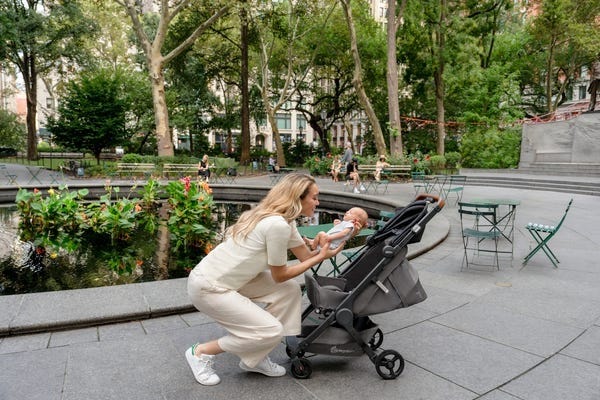

Advantages of Using Strollers for Nature Adventures
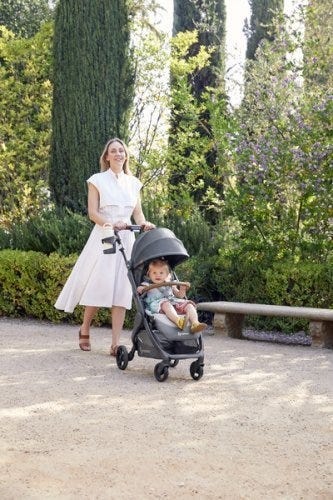

While baby carriers are fantastic for mobility and closeness, depending on the adventure of choice you might want to be a stroller along too.
There are a LOT of baby stroller options on the market. So we understand how confusing it can be to choose the one that’s right for your family. Not only are there a variety of brands, but a variety of strollers that serve different purposes.
There are a few types of strollers on the market:
- Full-sized stroller: This is typically the stroller parents thing of buying for all its versatility.
- Lightweight or umbrella stroller:These compact strollers are perfect for on-the-go adventures.
- Jogging stroller: Designed for parents who want to combine fitness with outdoor adventures.
- Double stroller: Designed for parents with multiple kids, especially twins.
- Car seat carrier: These strollers connect to a specific car seat. We don't typically recommend these as they can be unsafe for baby and uncomfortable for parents who are pushing.
Learn more about the types of strollers and which one would be best for you.
Benefits of Bringing a Stroller
- Storage Space for Gear: Ample room for carrying all your essentials like a diaper bag, beach toys and more.
- Shade and Weather Protection: Built-in canopies to shield your baby from the sun when they are lounging.
- Options: If you have more than one kid, you can stroll with one and carry the other. Or, if you’re getting warm or your little one is getting fussy, you can switch up their position from stroller to carrier or vice versa.
Safety Tips for Strollers
- Ensure your stroller is in good working condition. Make sure buckles are still buckling and that there are no rips or holes that could compromise your baby’s safety.
- Use sunshades or bug nets to protect your little one’s skin.
- Securing the baby properly: always buckle up your baby for safety even if you think they are old enough to go without the buckle.
Combining Baby Carriers and Strollers
For the ultimate flexibility, consider using both a baby carrier and a stroller on your outings.
Combining both options allows you to adapt to different situations. Use the carrier for more rugged trails and switch to the stroller for smoother paths or when your baby needs a nap.
Transition Tips
- Smooth Transitions: Plan stops where you can easily switch from carrier to stroller.
- Pack Light: Only bring essentials to make transitions easier.
Tips for a Successful Adventure
Planning Ahead
- Route Planning: Choose baby-friendly trails and parks. Check local mom groups or outdoor groups and get recommendations for the best outings for kids.
- Check Weather Conditions: Avoid extreme heat or unpredictable weather. Even with our most breathable carriers, when it’s hot, it’s hot. And having two bodies against each other in the heat will be naturally hot and sticky already.
- Packing Checklist: Include diapers, snacks, water, sunscreen, and a first-aid kit. These all-position carriers have storage pockets where you can fit some of the items easily!
- Stay Hydrated and Nourished: Pack healthy snacks to keep energy levels up and bring plenty of water for both you and baby.
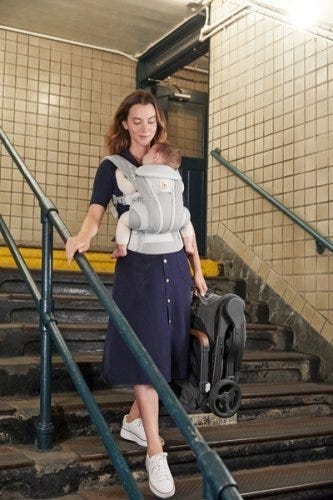

Summer adventures with your baby are a wonderful way to create lasting memories and enjoy the beauty of nature together. From baby carriers to strollers, Ergobaby products are designed to provide comfort and ease for both you and your little one. So, gear up, get outside, and explore the world with your baby by your side.
Ready to embark on your own summer adventures? Check out Ergobaby’s range of baby carriers and strollers to find the perfect match for your family’s needs. Visit our website today and start planning your next outdoor excursion!

